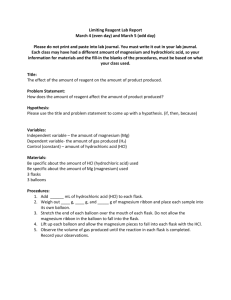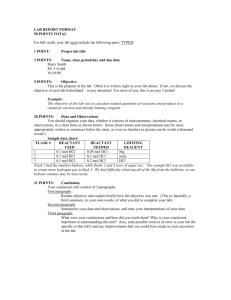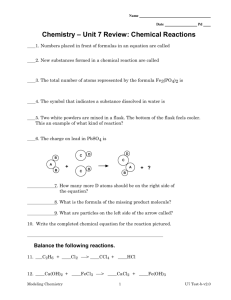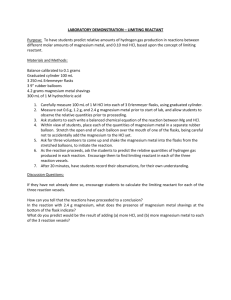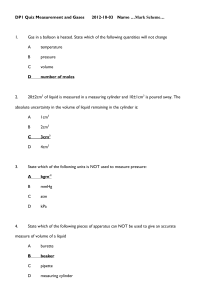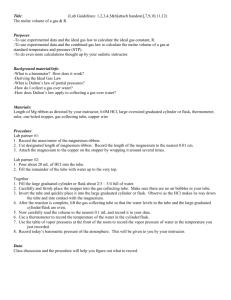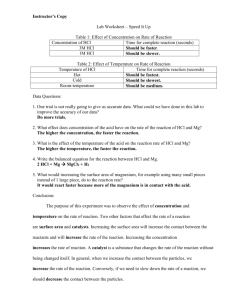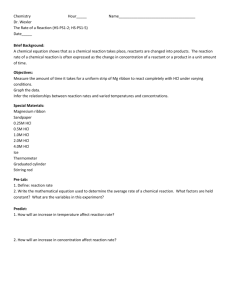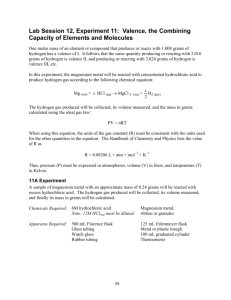Lab Report Format: Chemistry - High School
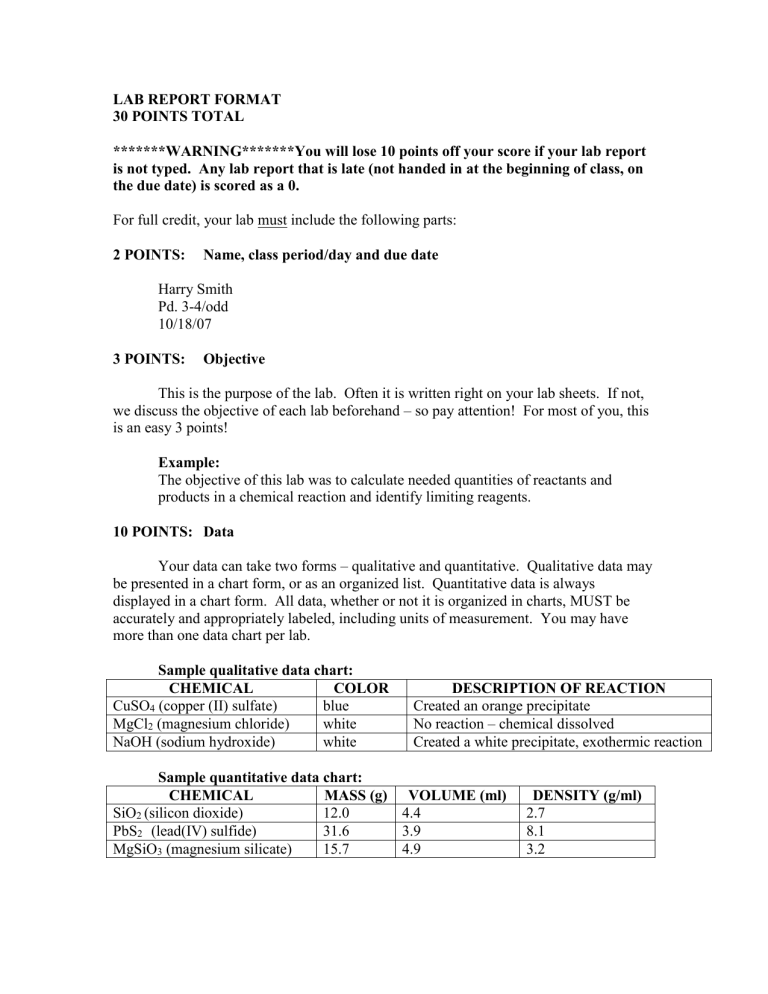
LAB REPORT FORMAT
30 POINTS TOTAL
*******WARNING*******You will lose 10 points off your score if your lab report is not typed. Any lab report that is late (not handed in at the beginning of class, on the due date) is scored as a 0.
For full credit, your lab must include the following parts:
2 POINTS: Name, class period/day and due date
Harry Smith
Pd. 3-4/odd
10/18/07
3 POINTS: Objective
This is the purpose of the lab. Often it is written right on your lab sheets. If not, we discuss the objective of each lab beforehand – so pay attention! For most of you, this is an easy 3 points!
Example:
The objective of this lab was to calculate needed quantities of reactants and products in a chemical reaction and identify limiting reagents.
10 POINTS: Data
Your data can take two forms – qualitative and quantitative. Qualitative data may be presented in a chart form, or as an organized list. Quantitative data is always displayed in a chart form. All data, whether or not it is organized in charts, MUST be accurately and appropriately labeled, including units of measurement. You may have more than one data chart per lab.
Sample qualitative data chart:
CHEMICAL
CuSO
4
(copper (II) sulfate)
MgCl
2
(magnesium chloride)
NaOH (sodium hydroxide)
COLOR blue white white
Sample quantitative data chart:
DESCRIPTION OF REACTION
Created an orange precipitate
No reaction – chemical dissolved
Created a white precipitate, exothermic reaction
SiO
2
CHEMICAL
(silicon dioxide)
PbS
2
(lead(IV) sulfide)
MASS (g) VOLUME (ml) DENSITY (g/ml)
12.0 4.4 2.7
31.6
MgSiO
3
(magnesium silicate) 15.7
3.9
4.9
8.1
3.2
15 POINTS: Conclusion:
Your conclusion will consist of 3 paragraphs.
First paragraph:
Restate objective and explain briefly how the objective was met. (This is, basically, a brief summary, in your own words, of what you did to complete your lab).
Second paragraph:
What was your conclusion and how did you reach it? This includes a brief summary of important data (if data sets are extensive, use an example) and a verbal description of your calculations and analysis of that data.
Third paragraph:
State possible sources of error in your lab (be specific to that lab!) and any improvements that you could have made in your execution of the lab.
Sample conclusion paragraph:
The objective of this lab was to calculate needed quantities of reactants and products in a chemical reaction and identify limiting reagents. This objective was met by first writing a balanced chemical equation for the reaction between hydrochloric acid and magnesium, and employing stoichiometric calculations to determine needed quantities of hydrochloric acid and expected amounts of hydrogen gas produced. These quantities were then compared with actual quantities used or obtained in the reaction.
Since the flask with the greatest amount of magnesium did not produce the largest balloon, or the greatest amount of hydrogen gas, it was determined that limiting reagents were present. Calculating the amount of hydrochloric acid needed for each quantity of magnesium, and comparing that to the actual quantity of hydrochloric acid present allowed for the identification of limiting reagents: In flask 1, 0.05 moles of HCl was needed, compared to 0.1 mole HCl used. Therefore, HCl was in excess, making magnesium the limiting reagent. In flask 2, 0.1 moles of HCl was needed, and 0.1 moles was present, so no limiting reagent existed. In flask 3, 0.2 moles of HCl was needed and
0.1 moles was present, so HCl was the limiting reagent. These results were confirmed by the balloon sizes; flask 1 had the smallest balloon, or the least H
2
produced, while flasks
2 and 3 had equal size balloons. Because HCl was limiting in flask 3, more H
2
could not be produced, resulting in a balloon volume equal to that of flask 2.
Possible error in this experiment was the mass measurement of magnesium.
Transfer of the magnesium ribbon to the balloons was tedious, and 100% of the magnesium needed to fall out of each balloon to react with the HCl. An improvement would be to use a powdered form of magnesium to make measuring accurate masses easier.
ADDITIONAL PARTS ON SELECTED LABS: Some labs require longer calculations that I will want to see worked out. I will notify the class on the day we discuss the lab, and those calculations will be worth additional points that will be added to the total points possible.
